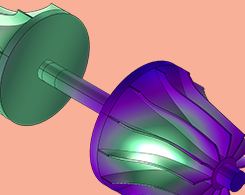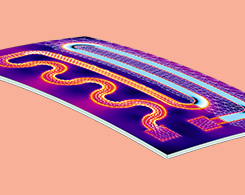Blog Posts Tagged Technical Content

Predicting the Stability of Rotor Systems with the COMSOL® Software
Instability in a rotor system can lead to catastrophic failure. Fortunately, engineers can predict the stability of rotor systems by performing stability analyses with the Rotordynamics Module.

How to Analyze a Glacier via Gradient-Based Optimization
This post highlights a gradient-based optimization method that geophysical engineers can use to analyze, for instance, the movement and sensitivity of a glacier.

Optimizing Thermal Processes in Carbon Manufacturing with Simulation
A guest blogger from SGL Carbon GmbH demonstrates how his organization uses heat transfer simulation to optimize thermal processes in carbon manufacturing.

How to Provide Structural Stability in Thermal Expansion Simulations
Say you want to compute thermal expansion and stresses in an object, but you don’t know what constraints you need. That’s where the Rigid Motion Suppression feature comes in.

The Nonparaxial Gaussian Beam Formula for Simulating Wave Optics
Here’s your introduction to the nonparaxial gaussian beam formula, which is used for simulating wave optics problems in COMSOL Multiphysics®.

How to Perform a Nonlinear Distortion Analysis of a Loudspeaker Driver
For a thorough and complete analysis of a loudspeaker driver design, acoustics engineers need to perform nonlinear time-domain studies in addition to frequency-domain studies.

Your Guide to Meshing Techniques for Efficient CFD Modeling
Learn how to use a variety of meshing tools for your CFD analyses, including mapped mesh, unstructured quad mesh, triangular mesh, tetrahedral mesh, swept mesh, boundary layer mesh, and more.

How to Use the Cluster Sweep Node in COMSOL Multiphysics®
Keep your cluster admin happy by using the Cluster Sweep node in COMSOL Multiphysics® to optimize the parallelization of parametric computations on clusters.
